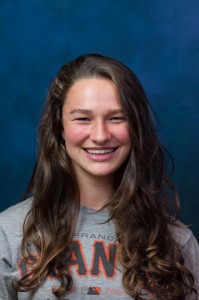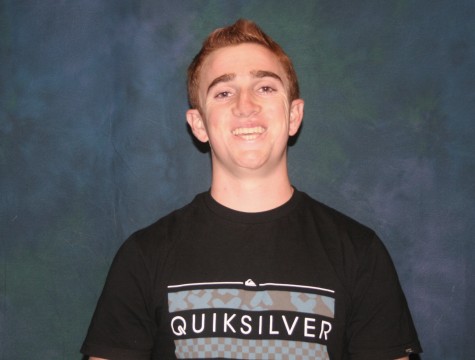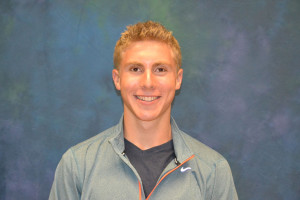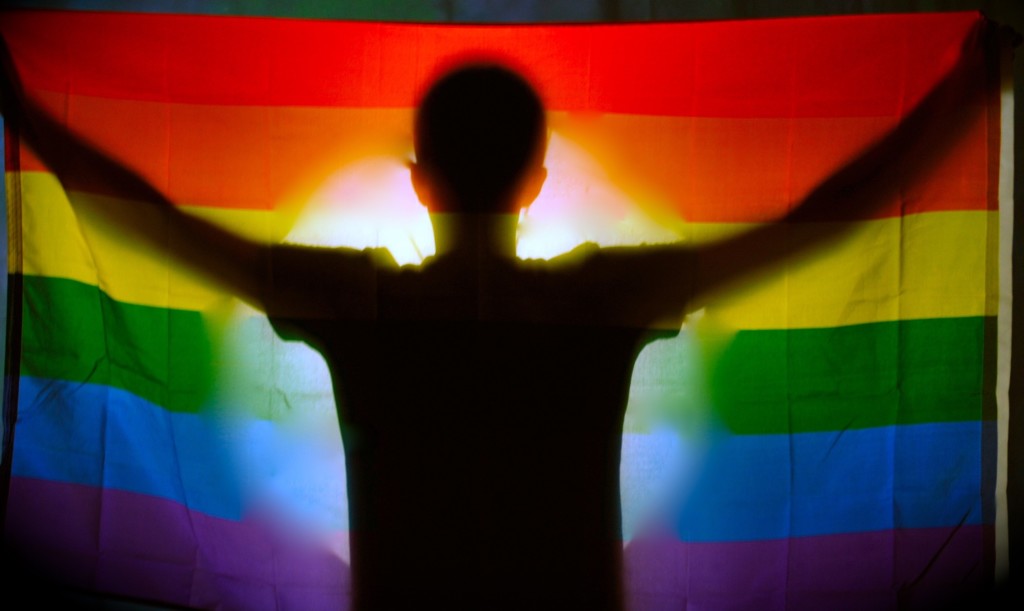The end of the rainbow
LGBT athletes and their allies seek out equality in athletics
One hundred years is a long time. It is greater than the average life expectancy anywhere in the world. A century ago, World War I broke out, Oreo cookies were invented and the Titanic was on the ocean floor. Putting the past century of humanity into perspective allows us to see just how long one hundred years can be.
Six months ago, a Russian court reaffirmed a 100-year ban on gay pride events in Moscow — just one of many actions against the lesbian, gay, bisexual and transgender Russian community in recent memory. With the 2014 Winter Olympic Games currently being held in Sochi, Russia, the situation in the country has attracted worldwide criticism. Many athletes, delegates and fans that are members of a vast LGBT athletic community will be traveling to the games. While leaders of many countries appealed to the Russian government to guarantee the safety of their citizens entering the country, the country’s stance is clear.
Though Russia faces extra scrutiny as it is in the international spotlight, over 75 countries have laws criminalizing homosexuality; in Uganda, for example, penalties are as severe as life imprisonment.
Here in the U.S., gay marriage is now legal in 17 states and Washington, D.C. at the time of this writing, and polls show that a slim majority of Americans are in favor of legalization across the country. However, those with alternative sexualities are not fully accepted.
“Our society, for lack of a better word, is heteronormative, so your straight friend never needs to come out as straight because that’s assumed,” Paly Queer-Straight Alliance co-president Jessica Feinberg (‘14) said. “So when someone makes a decision to tell people that they don’t fit into that, I think that people recognize that as being something that is often hard to do.”
Feinberg came out as lesbian during her junior year after concealing her sexuality as a sophomore. Although she appreciated those who recognized her ‘coming out’ for the difficult process it was, her feelings on the attention it received contrasted.
“I think that it shouldn’t necessarily be such a big deal because [being lesbian] is not the most interesting thing about me,” Feinberg said.
As Feinberg illustrates, the issue is not one dimensional. As the world turns its attention to the Winter Olympics, an underlying question remains: How do LGBT athletes fit into sports at any level?
With the intolerance many LGBT athletes face on the playing field, it is clear that they do not always find themselves in welcoming environments. Paly water polo player and swimmer Max Usman (‘17), openly gay since the end of seventh grade, has faced discrimination in the pool.
On his club team last season, Usman hit it off with a new player during the first practice. Only after he found out about Usman’s sexuality did his attitude towards Usman change.
“If I would ever block his shot or shut him down, he would yell slurs at me, like ‘Get your faggot hands off me,’ [and] ‘If you touch me one more time I’m going to punch you,’” Usman said. “He never followed through on it but he would always say that kind of stuff and it did create some sort of tension.”
Although Usman’s club coach as well as much of his team is supportive of his sexuality, Usman cites that slurs are a commonality in his life, both in the pool and at Paly.
“Something rude is said [to me] probably every other day,” Usman said. “I just sort of let it slide. I’m not going to be able to change them, so I might as well ignore it.”
While Usman’s case occurred at the high school level, prejudiced comments are prevalent in college and professional sports as well. Furthermore, these slurs are used to insult players of all sexualities.Last spring, video recordings of former Rutgers basketball head coach Mike Rice surfaced, showing Rice using derogatory language against his players. In one video, he calls one player a “fairy” and a “f—ing faggot.” Rice was later fired for his extensive physical and verbal abuse of his players.
In the NFL, discrimination likewise exists. Prior to last year’s Super Bowl, San Francisco 49ers cornerback Chris Culliver expressed during an interview that he was against openly gay players on his team, and encouraged any players having non-traditional sexualities to leave.
Although this attitude may not be shared throughout the football community or the athletic community as a whole, Paly defensive end and team captain Justin Rittman (‘14) recognizes how the message is interpreted.
“I feel like football would be an intimidating place for someone who is openly gay to be,” Rittman said. “I just think that some sports, especially football, can be viewed as somewhat of a ‘Ra ra!’ sport, and that usually leads to a lot of masculinity.”
With the issues of gender roles and sexual orientations so closely intertwined, stereotypes about alternative sexualities often contradict stereotypes pertaining to particular sports. For many, issues arise when traditional ideals collide with preconceived notions about what it means to be a member of the LGBT community.
Paly student Trevor, a bisexual athlete whose name has been changed, believes that the sports world is lagging behind when it comes to eradicating these stereotypes, which he perceives as unwarranted.
“The sports world hasn’t really caught up yet, and I’m not sure it will,” Trevor wrote to The Viking. “Men’s sports are supposed to be ‘manly.’ Someone who is part of the LGBT community might be stereotyped [as not being] aggressive, a stereotype which isn’t even remotely true.”
Paly athlete Jasmine, whose name has also been changed, faces a certain, pervasive stereotype in her sport as well: as a softball player, Jasmine is accustomed to herself and her teammates being profiled as lesbians. Jasmine, as a lesbian, happens to fit the stereotype, but this does not afford her any more comfort.
“I kind of feel bad [perpetuating] the stereotype, but I can’t help it,” Jasmine said. “Even though it’s a stereotype, it’s such a tabooed topic in the softball community.”
Jasmine opened up about her sexuality to the Paly softball team last year but does not feel nearly as secure anywhere else. She has not disclosed this information to her club teammates and does not want to test the waters.
“I don’t talk about it [being lesbian] with my travel ball team because I don’t know how people stand,” Jasmine said. “With my travel ball team we have very Catholic players, very religious players, and I don’t want to share that information [about my sexuality] all the time.”
In Usman’s experience, assumptions linking his sexuality to his sport are pervasive. He contests the notion that he plays water polo because of his sexuality, a part of himself that he feels plays no role in his athletics.
“A lot of people ask me, ‘Did you start doing water polo because you’re gay?’, and I always take great offense to that,” Usman said. “I started playing water polo before I knew that, and I fell in love with the sport before I found out [I was gay].”
The dearth of openly LGBT athletes in many sports at the collegiate and professional levels poses a problem for younger LGBT athletes looking for role models who share their sexual orientations. Rittman expressed his belief in the importance of role models, especially for LGBT athletes.
“I think everyone should have someone to look up to that is an influential person,” Rittman said. “I think there are a lot of LGBT athletes, younger athletes, that need someone to look up to like that.”
Despite playing football since the age of 12, Rittman cannot recall meeting an openly gay football player on any of his rosters. At the professional level, the NFL is no different and has never had an active openly LGBT player. Even with the nonexistent number, Rittman is open to the idea of LGBT players.
“If you can play, you can play,” Rittman said. “If you’re good, you should be allowed to play no matter your skin color, or sexuality or anything.”
Even though athletes like Rittman accept LGBT competitors and teammates, the number of open active players in sports remains low. As is becoming more evident, many players choose to conceal their sexuality — whether because of slurs and homophobic comments or having to deal with the publicity that ‘coming out’ entails — until after their playing days.
In spite of the more difficult experiences of athletes like Jasmine, LGBT athletes can find support upon coming out to their teammates and coaches. A rower, James Hindery (‘14) joined the NorCal crew team midway through his sophomore year after ending his football career due to concussions. After he came out as bisexual, Hindery said his teammates did not have a notable reaction.
“They [my teammates] may not have been okay with it [my sexuality], but they didn’t use their not being okay with it as a form of aggression, and so it didn’t seem like it was much of a positive or negative impact on the environment,” Hindery said.
According to Hindery, the team atmosphere feels relaxed, and the climate as a whole is safe and encouraging. Like Usman and Rittman, Hindery believes that sexuality should not be an issue in determining an athlete’s ability to play.
“If you are dedicated and if you are good enough at your sport, your teammates are not going to care [about your sexuality],” Hindery said. “They’re going to realize that you are contributing … to the overall success of the program.”
Newly appointed head football coach Jacob Halas agrees with Hindery’s viewpoint and tries to foster an accepting environment on his team.
“Personally, I don’t care what race, religion or sexual preference a player has,” Halas wrote to The Viking. “If the kid is willing to give everything he can for the good of team, why would I care? The ability to block, tackle, throw, run and hit has nothing to do with your sexual preference.”
The challenges faced by LGBT athletes today are not new to the sports world: Women once faced inequalities in sports and had to fight to gain the acceptance they command today. Since Title IX passed over 40 years ago, women have arguably achieved parity with men in athletics.
Marlene Bjornsrud, recipient of the International Olympic Committee’s Women and Sport Award for the Americas, believes that creating a sports culture that is accepting of differences in sexuality is the next battle to be fought and won. In a visit to Paly this January, Bjornsrud, an out lesbian, gave some insight into the future of activism in athletics.
“I think the movement in sport now is a little bit less gender-based and much more making it a safer place for the LGBT folks to compete,” Bjornsrud said.
Advocates for LGBT rights have created efforts in the athletic sphere, focusing on making sports at all levels a more inviting environment. The social activism campaign You Can Play, launched in 2012, is sloganed by, “If you can play, you can play.” The campaign aims to eradicate sexuality-based discrimination and to promote the creation of environments which are accepting and respectful of all athletes, regardless of their orientation. The campaign is also an official partner of the NHL.
As more teams, from amateurs to pros, become accepting of their players’ sexuality, more athletes start developing the courage to come out.
Just recently, Division III college punter Conner Mertens became the first active openly bisexual football player at the collegiate level. Mertens, who attends Willamette University, announced his sexuality publicly via Twitter on Jan. 27 after coming out to his coach and teammates the week prior.
Elsewhere in college sports, other athletes are opening up about their sexuality as well. At Kenyon College, lacrosse player Holden Richards came out as gay this past year. Teammate and Paly graduate Walker Mees (‘13) expressed the positive effects that the incident has brought about.
“Just because he happens to like guys doesn’t make our team any different,” Mees wrote to The Viking. “I think we [the team] are all a lot more conscious about saying stuff like ‘that’s gay’ now that he has come out … [but] there haven’t been any bad situations at all.”
With the work of LGBT athletes and their allies, light now shines on the previously taboo topic of sexuality in sports. While non-traditional sexualities are not universally accepted, headway has been made in the direction of equality. Athletes have grown more confident, and in turn have began to open up on the issue of their sexuality.
High-profile LGBT athletes such as Jason Collins and Brittney Griner have come out in the past year, providing an example for other players.
“Since [so many] people are coming out now, there will be more people for gay athletes to look up to,” Jasmine said. “There will be more acceptance a generation from now, and I think that’s going to help.”
As the cause for LGBT equality moves into the mainstream, Bjornsrud believes that progress cannot come fast enough.
“We’re making strides,” Bjornsrud said. “Just darn slow.”

Audrey is a senior at Paly. She is a co-captain of the varsity girls' cross-country team and also runs track. In her free time, Audrey's hobbies include...

Rowan is an all around amazing person. After graduating Paly in 2015, he took his talents to USC in Los Angeles and has not been heard from again. An anonymous...

Josh is a senior at Palo Alto High School. This is his second year on The Viking. He plays varsity lacrosse and likes watching football. He is a big...



